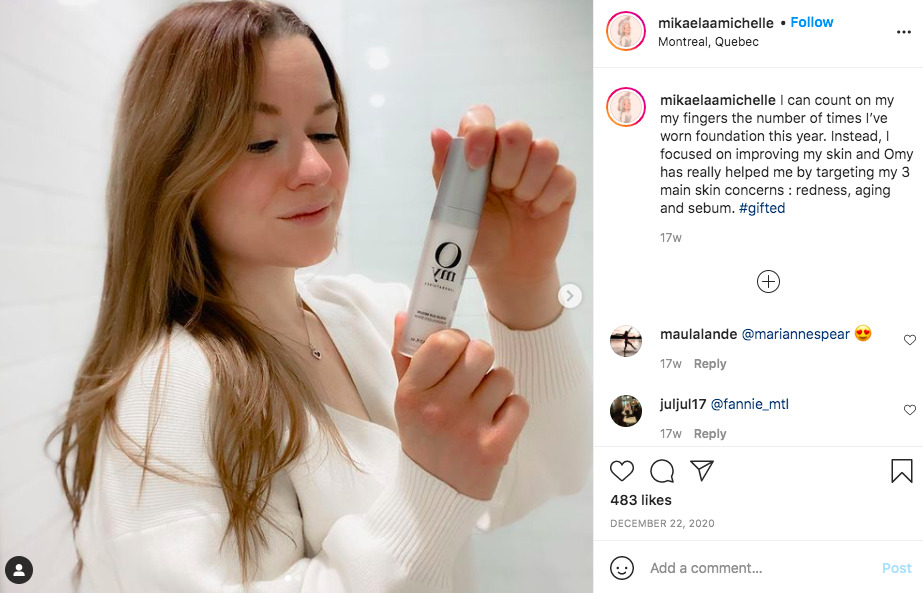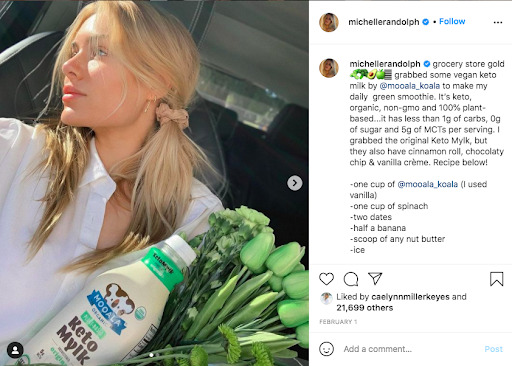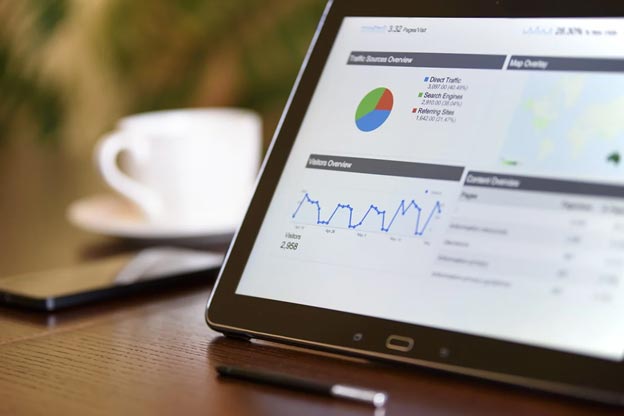It’s almost impossible to scroll through social media without seeing some form of influencer marketing. Everywhere you look, influencers are showing off their latest snacks, clothes, makeup brands or candles, and that’s just the beginning.
From traditional posts to ever-popular Instagram Stories to long videos, influencers are always finding new ways to be sponsored on their favorite platforms.
When it comes to defining influencers, it’s important to note that anyone can be an influencer. Like John Maxwell says, “To be an influencer, you have to love people before you can try to lead them.” If you have one follower, you have influence. If you get one like on your posts, you’re generating engagement.
So let’s take a moment to acknowledge the aspiring influencers who are growing their following. These people post about their favorite brands and products simply because they love them. Granted, they’re probably also hoping for a brand deal in the long run, but at the time that they post, they aren’t making any money for their efforts.
It might feel like influencer marketing is a new thing that just became popular recently. Actually, influencer marketing began 15 years ago. PayPerPost, the first marketplace to pay bloggers for branded content, launched to quite a bit of speculation. Since blogs were mainly seen as online diaries, many experts were skeptical that adding advertising or sponsorships into the content would actually feel authentic.
That’s a challenge that today’s influencers are still facing, but for those who can manage to promote products or services and sound real and authentic while doing so, there are many rewards to be reaped. After all, people want to buy from other people, so when they find someone they like, they’re more likely to trust their recommendations.
What Is Influencer Marketing?
Influencer marketing is a way brands can promote their products through endorsements or recommendations from influencers and content creators on the internet. Social media and blogs are home to the majority of influencers, although other creators like podcast hosts can fit the bill, too. Many times, influencer marketing is a part of brand awareness campaigns, but it can also result in plenty of conversions and sales.
While influencer marketing began back in 2006, it has changed a lot over the past 15 years. Facebook and Twitter were just getting started, but Instagram wouldn’t join the social media landscape until 2010. When influencers began, they were primarily bloggers who shared stories about their lives and promoted products they used each day.
It’s kind of a paradox, but while influencer marketing hasn’t changed that much, it’s vastly different in several ways. Influencers are still sharing stories about their lives and promoting products they use each day. Now, though, there are many people who are career influencers, earning a living through brand sponsorships. When it began, any money a blogger made through a partnership was nice side cash, but certainly not enough to be considered full-time income.
Influencers today also have so many more options than the original influencers did. There are countless social media platforms to choose from, and there are so many kinds of content they can create. For those who like video platforms, YouTube or TikTok are excellent options. Those who want to share long-form written posts can benefit from traditional blogging or even Facebook. Influencers who want a little of everything can turn to Instagram. While Clubhouse is still a new platform, it probably won’t be long until influencers find a way to turn that into a spot for their promotions, too.
Influencer Marketing By The Numbers
Influencer marketing is an incredibly popular marketing tool right now, and for good reason:
Unless you want your company to be left behind, it’s time to start exploring your options for influencer marketing. No matter what industry you’re in, there’s sure to be at least one influencer who fits your needs. And don’t be worried if you can only find smaller influencers in your niche, because:
If you’re looking to grow your brand awareness, increase sales, or really get your brand’s name out into the world in any way possible, you need to be taking advantage of influencer marketing. You don’t see a media value like this with other marketing tactics. The most important thing, though, is to approach influencer marketing strategically, so you do it correctly. Generating this kind of earned media equivalence only happens if you’re working with the right influencers in the right niche.
4 Reasons Why Influencer Marketing Will Continue to Grow
Influencer marketing is popular now, but it’s not just a trend that’s going to fade away. In fact, it’s nowhere near done growing. It will continue to become more and more popular over the coming years, so now is the best time to learn about it and prepare to incorporate it into your own strategies.
1. More people are becoming influencers.
While it might feel like there are too many influencers out there, that’s actually not the case. As social media platforms continue to grow, there are more opportunities for new people to become influencers.
Some will certainly do this intentionally, while others will simply be sharing about their life and happen to strike up a brand deal with a company they love. Either way, there will be more people growing audiences in specific niches. This means you have a better chance of finding someone talking to your specific ideal audience that’s perfect for your ecommerce store.


2. Influencer marketing agencies are growing in popularity.
As with any business strategy or tactic, influencer marketing is becoming standardized. There are now agencies that represent influencers and agencies designed to help brands find the best influencers for their strategy. As business surrounding influencer marketing continues to grow, the marketing itself will also keep expanding.
For ecommerce brands that don’t want to dedicate the time or resources to keeping up with influencer marketing trends, these kinds of agencies are a great option. You can still take advantage of the incredible success that often comes with influencer marketing without learning everything yourself.
3. There are more content options.
Influencers began with creating written blog posts talking about their favorite products. Then, social media became more popular and the kinds of content influencers were creating changed. Nowadays, video is perhaps the most popular kind of content for influencers to make when it comes to promoting products. Instagram and Facebook Live, IGTV, YouTube, and TikTok have all shown the incredible power of video.
However, with the growing popularity of podcasts and the advent of audio-only apps like Clubhouse, it makes you wonder what the next big trend in influencer marketing will be. While we might not know that answer, we do know it will continue to evolve. Ecommerce brands can be prepared to take advantage of new, innovative platforms and content by joining these new platforms as they arise. If you are already building a following on a particular platform, influencers will be more likely to want to work with you.
4. Influencers are showing more of their reality.
In many ways, influencers are going back to their roots. In recent years, people have become far more interested in seeing posts that aren’t overly edited. They don’t want to listen to, learn from, or take advice from someone whose life seems entirely unattainable. Instead, they want to see reality. They want to see influencers make mistakes and have bad days and pick themselves back up again and keep going.
Because of this open transparency, even more people are trusting and following influencers, which means that there are more people to see and buy from sponsored content. Ecommerce brands can now reach even more people when they work with influencers, especially if they’re not caught up in showing only the perfect, highly-filtered sides of their life.


Ways Ecommerce Stores Are Using Influencer Marketing
Influencer marketing is working for all kinds of businesses. Big brands work with celebrities to promote their products, and entrepreneurs who are just getting started find a way to work with influencers who are still growing their platforms. Ecommerce stores are using influencer marketing in a few key ways, and if you aren’t on board yet, it’s time to join.
1. To promote their store.
Promoting an online store is probably the most common and most obvious way that ecommerce brands can use influencer marketing. When influencers are talking about or promoting your brand and products, it’s easy for them to provide a link to your ecommerce store. In fact, it’s easier than telling someone they need to go to Target or go to “wherever books are sold.” Instead, they can add a link directly to your page, which means potential customers are less likely to get lost along the way.
Tip: Create a code or provide influencers with specific links to your page. This way, you’ll be able to track and see the ROI of your influencer campaigns.


2. Share user-generated content.
Another great benefit of influencer marketing is having user-generated content (UGC) that you can share. People trust other people more than they trust brands, by and large. However, it can feel like a challenge to find images and content from people outside of your team. When you work with an influencer, you can request the use of their content on your page. Then, you’ll be able to re-post their content, which shows your audience the partnership you have with this influencer as well as their images and copy.
Tip: Create a plan for sharing UGC so you can fully maximize the benefits. If you know you’re promoting a particular product soon, save your UGC for that product until that promotion comes around so you can have the full effect.
3. Use testimonials from influencers.
Every brand needs more testimonials on their website, but sometimes customers don’t think to come back and leave a review or share their experience. When you work with an influencer, you can capture their testimonial and their story. By putting their information on your site as a whole or the page of the product they’re reviewing specifically, you can provide more social proof to your potential customers so they feel more confident purchasing.
Tip: Outline what kind of testimonial you want from the influencer at the beginning of your campaign. This is the best way to ensure that they capture all of the content and ideas you want to see in their testimonial.
4. Offer a promotion with an influencer.
Offering a discount when you’re working with an influencer is such a great way to increase your sales and ROI on the campaign. First of all, like we mentioned earlier, having a discount code specifically for that influencer will allow you to track their conversions. Beyond that, though, many people will strongly consider making a purchase if they can save some money while doing it. Sometimes that can be the tipping point that really inspires someone to click through to your shop and make the purchase.
Tip: Alongside a base rate, you can negotiate with the influencer to offer them a percentage of each sale made with their code. This can encourage them to be thorough when creating their campaign.
5. Work with micro-influencers.
We alluded to this a little earlier, but working with micro influencers is certainly the way to go, especially for ecommerce brands. Don’t be afraid of working with someone with a small following, so long as their engagement rate is significant. If you’re working with an Instagram influencer, it can be easy to feel like you need to choose someone with at least 10,000 followers so they can take advantage of the swipe-up feature, but that’s not true. That feature isn’t a requirement of a successful campaign. Instead, they can use a direct messaging strategy that allows them to rely on the connections they’ve built with their small following to encourage them to learn more or buy.
Tip: Always look for the engagement rate on their posts. Sometimes influencers with big followings have gotten to that point by buying instagram followers. These bought followers tend to be fake, which means they aren’t going to engage with the campaign or purchase your product.
How To Build An Influencer Marketing Strategy
Now that you’re ready to incorporate influencer marketing into your overall marketing plan, it’s time to start with a strategy. Like any good marketing tactic, building a strategy can ensure that you’re being thorough and methodical. You’ll know exactly what you want to get from influencer marketing and you’ll have a process for measuring it to see your progress along the way.
1. Document your goals and key performance indicators.
Any good strategy begins with goals. When you’re thinking about influencer marketing, there are a number of goals you could have for your campaign. While the most obvious is probably making sales, working with influencers can do more for your brand than just create sales in the moment. Here are a few goal ideas:
Building Brand Awareness
Working with influencers means your brand’s name is getting in front of thousands of people who may have never heard of it before. They’re learning about your brand from someone they trust, which means they’re going to be more ready to learn about your company or follow you on social media.
Attracting A New Target Market
If you’re looking to change your ideal customer a bit, there’s no better way to do so than working with an influencer. Be advised: it will probably take a little more work on your end to explain to the influencer why your brand is right for their audience. Influencers are often protective of their audiences because they’ve worked hard to grow their following and earn their trust. However, if you work with the influencer to create a strong campaign plan, they can help you reach a new market.
Facilitating Lead Generation
Finally, influencer marketing can help you get more leads and customers. Depending on what you sell, you might want your influencer partnership to move their followers toward a nurturing campaign so they can get to know your brand better. Or, you could send them directly to your e-commerce shop to start making sales.
Once you know what your goal is, it’s time to identify your key performance indicators, or KPIs. These will be the metrics you’ll track throughout your campaign and analyze when it’s over to see how well your campaign did. If your goal is brand awareness, you might want to track visits to your website or followers on social media. If your goal is lead generation, you’ll want to track sign ups for your nurturing sequence. Sales can easily be tracked with unique links for influencers or a special promo code.
2. Understand the influencer landscape.
Before you really begin working with influencers, you’ll want to take the time to actually understand the landscape. Know the different types of influencers — we’ve talked a lot about micro-influencers, but there are also macro-influencers and celebrities. By and large you’ll want to avoid celebrities, as their following is so big that their engagement rate is very low, but their rates are often quite high.
Take some time to observe influencers and see how they promote brands before you look to pitch your brand to anyone. This will ensure that you’re more well-informed and that you can make a bigger impression on the influencer.
3. Connect with influencers.
Once you’re confident that you know what you’re doing, it’s time to connect with influencers. There are many different ways you can find influencers that will work for your brand, but you’ll want to start with looking to others in your industry. Not only will you discover who your competitors are working with, but you’ll also see what size influencers they’re targeting. Then, you can make a decision about whether you want to look for people with a similar-sized following or something different.
Depending on the platform you’re looking to promote on, you can find tools that will help you identify influencers in your niche. InfluenceGrid helps you find TikTok influencers, and Awario helps you find influencers on a variety of platforms. But you don’t have to use tools like this to find influencers. You can also search through hashtags to find people making #sponsored posts. From there, you can look through their audience and see if that resonates with you.
You can also start with your followers. Click on a few of the people who are already following your brand. Scroll through the other accounts they’re following and see if you can find any influencers there. This is a great way to find someone who is already targeting your ideal audience.
Wrapping Up
Influencer marketing is here to stay, and it’s only going to grow more in the coming years. Ecommerce brands can truly benefit from working with influencers, no matter what their goal is. Influencers can help you grow your following, make sales, or simply get the word out about your business. No matter what, today is a great day to start creating your influencer marketing strategy.






